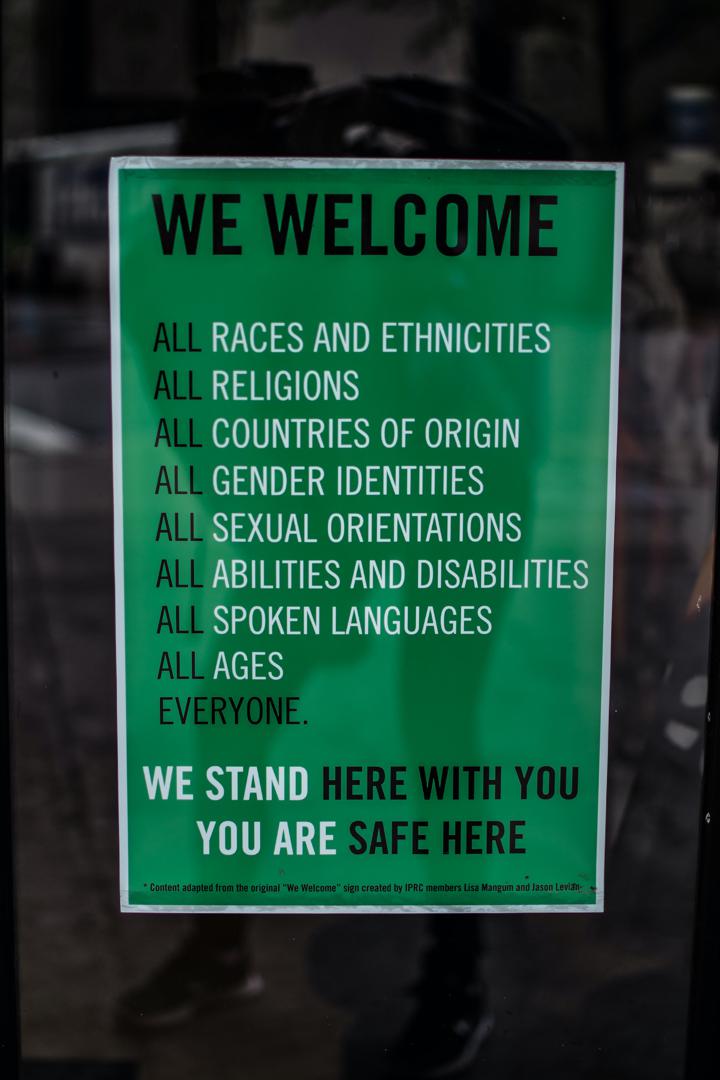You’ve worked hard to hire a flourishing, diverse team.
Each person works in their own zone of genius, contributing to the organization in a profound and meaningful way.
But, there’s something keeping your team from truly thriving.
While you’ve gone above and beyond to remain diverse, you’re still struggling to retain top talent.
With such an incredible team on deck, what could be the problem?
The answer: Have you stopped to consider the impact of inclusivity, too?
Hiring a diverse team has been a priority for many companies — but few take the necessary steps to make sure those employees feel accepted
While having a wide array of talents and people on board is vital to fostering company growth in a hybrid work model, you may struggle to keep those talents on board if you skip on inclusivity.
Let’s take a closer look at the core differences between diversity and inclusion, why inclusivity matters just as much as diversity, and four ways you can build a more inclusive workplace that boosts employee retention.
What’s the difference between diversity and inclusivity?
According to the Society for Human Resource Management (SHRM), diversity refers to:
The collective mixture of differences and similarities that includes, for example, individual and organizational characteristics, values, beliefs, experiences, backgrounds, preferences, and behaviors
SHRM refers to inclusion as:
The achievement of a work environment in which all individuals are treated fairly and respectfully, have equal access to opportunities and resources, and can contribute fully to the organization’s success.
In other words, diversity focuses on who you employ, while inclusivity focuses on supporting those employees to feel safe, welcomed, and represented.

Going beyond diversity
What’s not to love about diversity movements? They champion human rights, foster employee creativity, and help organizations attract a broader talent pool.
Valuing diversity as part of your company philosophy is crucial — but to implement it, you have to start with intention. Simply checking a box and hiring one employee from each community isn’t going to cut it.
That’s where the inclusivity piece comes in.
To make a real impact, you have to remember that people are different. You have to get passionate about valuing and encouraging various perspectives across all kinds of groups.
In fact, most job seekers, 70% to be exact, say an organization's commitment to equity, diversity, and inclusion is important when evaluating a potential employer.
TL;DR: To implement diversity initiatives effectively, you need to create an environment where everyone feels included and free to express themselves. Your mission? Make sure all voices are heard.
With that said, let’s take a look at four ways you can build a more inclusive workplace that retains top talent.
4 ways to build a more inclusive workplace and retain top talent
Without further ado, here’s how to inspire a more inclusive workforce:
1. Use inclusive language in your job descriptions
Words have the power to attract or discourage people from applying to one of your job opportunities.
That’s why it’s critical to pay attention to the language you use in your job descriptions.
To avoid alienating anyone, train the person responsible for writing job postings to avoid using restrictive words. Restrictive words include any terms that divide groups of people. These terms may be based on gender, age, race, sexual orientation, status, religion, or something else.
For instance, write “mechanic” instead of “repairman,” “flight attendant” instead of “stewardess,” and “experienced marketer” instead of “master marketer.” This is also important if you’re open to hiring internationally, as interpretations of certain terms may vary. Instead, using inclusive language not only broadens the appeal of your job listings but also communicates to potential candidates that your organization embraces individuals from all backgrounds.
Pro-tip: Use a human resources management system (HRMS) to create inclusive job description templates, collect new-hire feedback, and streamline onboarding. You can also create a “restrictive terms to avoid” team board or database in your HRMS for hiring managers and HR reps to review whenever they need a refresher.
2. Invite and encourage each person to contribute during meetings
One of the simplest ways to foster inclusivity is to invite and encourage every employee to contribute during team meetings. Notice we said “invite” and “encourage” — not force.
Some employees will speak up voluntarily. Others will need a bit of nurturing and motivation to open up. And some may not feel the need to speak up, which is okay. Giving them the option to participate and respecting their choice is your best course of action.
For instance, if you’re hosting a meeting about what kinds of personalized perks employees would like, and someone says they’d love for the company to help pay for college, try asking other people what they think about that idea.
Here’s an example:
“Great idea, Tamara. Samuel and Ximena, what do you think about that?”
If Samuel answers: “I love it, I’m always looking for ways to reduce student debt,” respond with a relatable confirmation, such as “I hear you, paying off college loans took me nearly a decade.”
If Ximena says, “I honestly don’t have an opinion,” try saying, “no problem, Ximena, feel free to chime in as you see fit.”
Here are some other ways you can give each person a chance to contribute during meetings, complete with sample scripts:
- Value their opinions: “Your perspective really makes me think. I appreciate you bringing this up.”
- Ask more questions to dig deeper: “That’s an insightful idea, Johannes. Can you share more about cloud business intelligence and the solutions you had in mind?”
- Thank them for sharing: “Thank you for contributing to the conversation, Martina!”
- Uncover their “why” and why it's meaningful to them: “What brought you to this conclusion, and what about it specifically inspires you?”
- Workshop their ideas: “I love that idea, Cacsmy! Play that out for us. If we were to adopt a text-to-speech tool, how would that streamline our content production processes?”
- Praise and recognize their unique traits: “Thanks for your pristine attention to detail, Maya! You caught an error that could have easily dismantled this project. Teach me your ways!”
- Give each employee a chance to lead or present at company meetings: “Axle and Peyton, you bring up a good point about creating more supportive practices for people with INFJ personalities. Would the two of you like to share more about how we can make that happen at our team brainstorming session next Tuesday?”
3. Make inclusivity training mandatory (and ongoing) for everyone
The scripts we shared above might be helpful, but without formal inclusivity training, your efforts to hire and work inclusively may be short-lived.
To truly foster an inclusive workplace, everyone needs to be trained and ready to implement inclusive practices at all times.
Informed leaders will trickle their influence down to their employees. And trained employees will advocate within the team.
If your organization already hosts diversity training initiatives, feel free to add inclusivity as part of those programs. For instance, dedicate a module or specific days that solely focus on inclusivity.
We also recommend including inclusivity training as part of your onboarding process, so new hires understand your DEI expectations before they start work.
It’s also important to schedule ongoing inclusivity training, so it always remains top-of-mind.
Important note: We hate to be the bearers of bad news, but you’ll need to initiate protocols to help ensure inclusivity is implemented in the workplace. If an employee or manager breaches a protocol, make sure you have a system in place that reprimands or, if needed, dismisses the team member.
4. Create opportunities for employees to safely (and privately) share feedback
As we mentioned previously, you should never force anyone to contribute to a conversation if they don’t want to.
But what about people that have something to say but don’t feel safe doing so in front of others?
To encourage employees and managers to share feedback, consider designating a few safe spaces where they can communicate free of judgment.
Here are some quick ideas:
- Send anonymous feedback forms after every company meeting, training, and brainstorming session
- Invite people to schedule private 1:1s with you or their managers — add this invite along with a link to your Calendly or preferred calendar tool in your email signature
- Host team chats in a low-stakes environment, think virtual coffee chats and casual team drop-in meetings
- Send individual emails to employees who don’t speak up often to let them know you’re happy to hear their feedback privately if they have anything they’d like to share
- Create a “no-judgment” feedback box where in-person employees can drop their thoughts in at any time

Wrap up
While diversity initiatives are essential to prioritizing human rights and fostering company growth, retaining top talent also requires a strong focus on inclusivity.
If you’re ready to nurture your team, build your organization’s future, and reduce turnover, we hope the insights we shared today will help you build a thriving, inclusive team.
That’s it for today. To your (and your employees’) success!
PS: Need to manage expenses or offer team recognition or reimbursed employee perk stipends to your global and remote teams while fully complying with tax law? Schedule a personalized demo today to see why Compt was recognized by SHRM as an innovative HRTech platform.
About the Author: Jeremy Moser is co-founder & CEO at uSERP, a digital PR and SEO agency working with brands like Monday, ActiveCampaign, Hotjar, and more. He also buys and builds SaaS companies like Wordable.io and writes for publications like Entrepreneur and Search Engine Journal.
